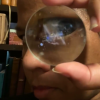- Formiculture.com
- Forums
- Gallery
- Members
- Member Map
- Chat

Starting this July I'm posting videos of my ants every week on youTube.
I like to make relaxing videos that capture the joy of watching ants.
If that sounds like your kind of thing... follow me >here<.
My Odontomachus did the same and yes, ants reuse silk often. My weaver ants also reuse silk if the structures are broken.My formica colony is secretive, light hating, and hard to film. I have given in to their needs and put them in a natural set up. But, before I did I noticed that they seemed to like to use the silk covered sand left over from their larva making their cocoons (sand grains in a loose matrix with silk) to build. They used it to block the entrance to their nest. They attempted to use it to block the glass to reduce light.
In their new natural enclosure they made a hole in the sand. I could look into it and see them about 1cm below the surface. Light could reach in to their hiding spot. I tried to film them with a light to show the enclosure and by the next morning the hole was covered over.
The sand is on the dry side, so how did they make a ceiling using crumbly sand?
Looking closer I could see threads of silk glinting in that sand.
So my hypothesis is that some ants reuse the sand/silk mixture left over from larva making cocoons as a prized construction material.
Could this be how complex behaviours like those of the weaver ants evolved? You start with simple recycling of an material, then some ants have larva that make more excess silk so they have more of this versatile material. Then ants start positioning the larva so that they make more "silk and sand slurry" (or silk and dead leaf bits for tree dwellers) ... and over time the larva ends up being a glue gun...
Could that be how it worked? I'm very interested in the theories about the evolution of these complex behaviours.
Also have any of ya'll observed ants using "silky sand" as I have? This could just be a fluke. Ants just happen to use that material... not a real thing they do in general. What do you think?
0 members, 1 guests, 0 anonymous users